China released key indicators from the seventh national population census on Tuesday. The data provides fresh insights into China's latest demographic trends and reveals vital information that will contribute to the country's policymaking over the next 10 years.
The once-in-a-decade survey was particularly closely watched amid speculation that China, the world's most populous country, may have experienced a decline in its population. However, the census data showed that the Chinese mainland's population maintained mild growth momentum over the past decade.
Here are six takeaways from the report.
1. Total population increases
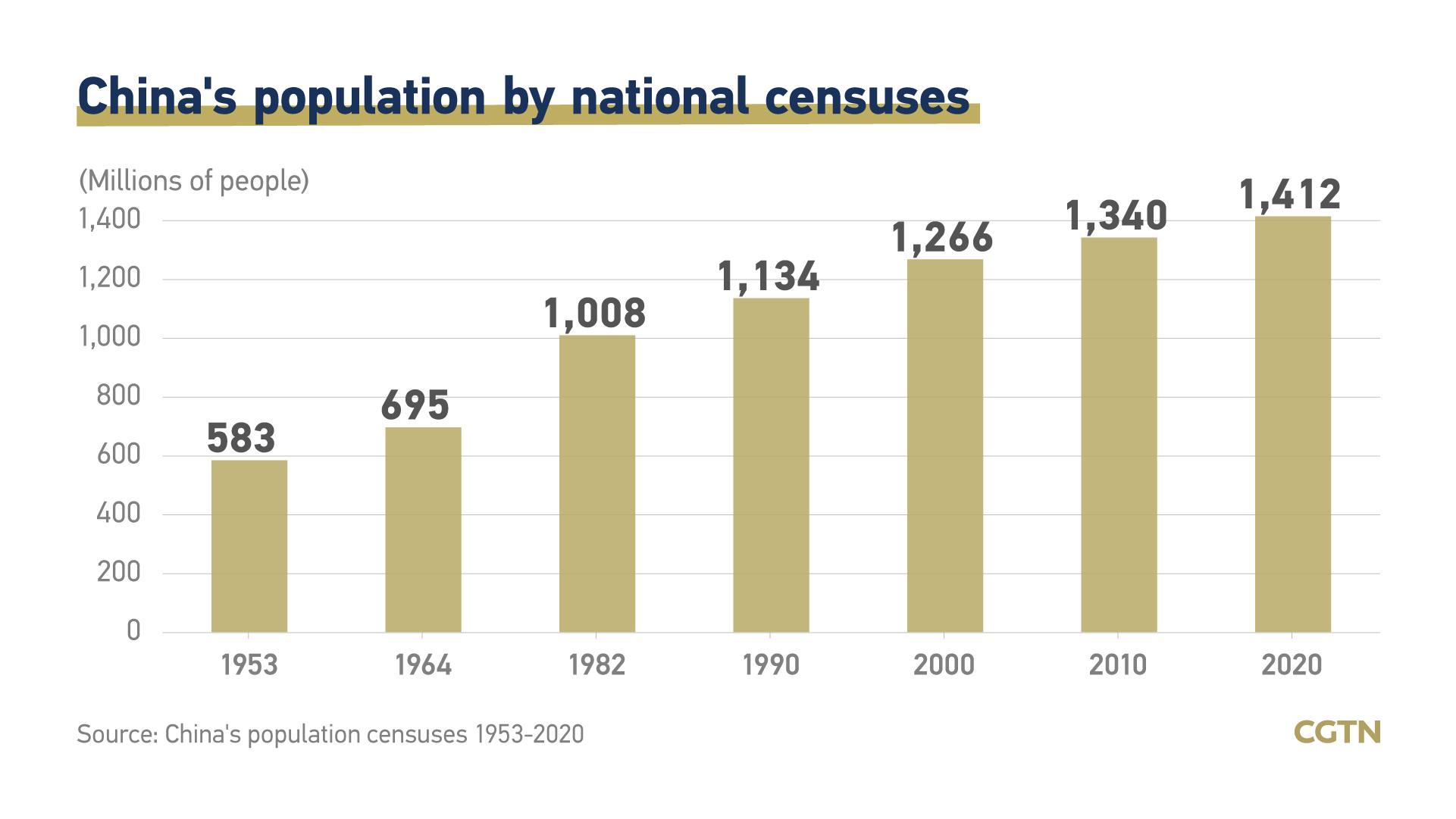
The total population of China's mainland increased to 1.41 billion in 2020 from 1.34 billion 10 years earlier. The average annual growth rate did decrease, however, down by 0.04 percent from the rate recorded in the previous national census.
In short, while China's population continued to grow over the past decade, the rate of growth has slowed.
2. Proportions of old and young up
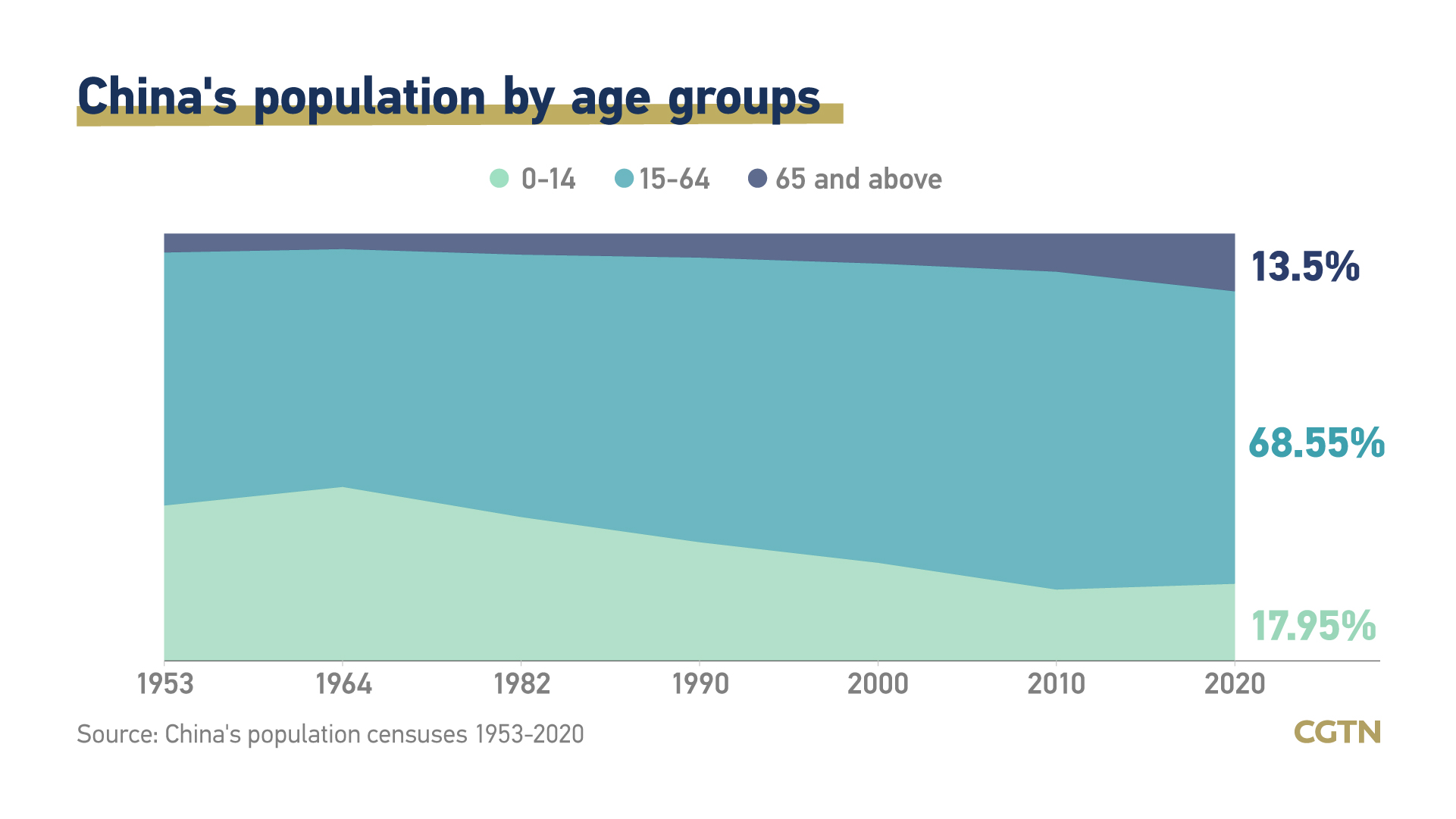
A breakdown of the share of China's population by age group reveals some surprising insights.
There has been much focus on "aging populations" around the world, and China is no exception. The data latest shows an increase in the share of the population aged above 65 years old, from 8.9 percent in 2010 to 13.5 percent in 2020.
However, there has also been an increase in the share of the child population, those from 0 to 14 years old, from a decade ago, as the country altered its fertility policy in 2016, allowing all couples to have two children. The new census data suggest that the adjustment has achieved positive results.
3. Size of the family drops
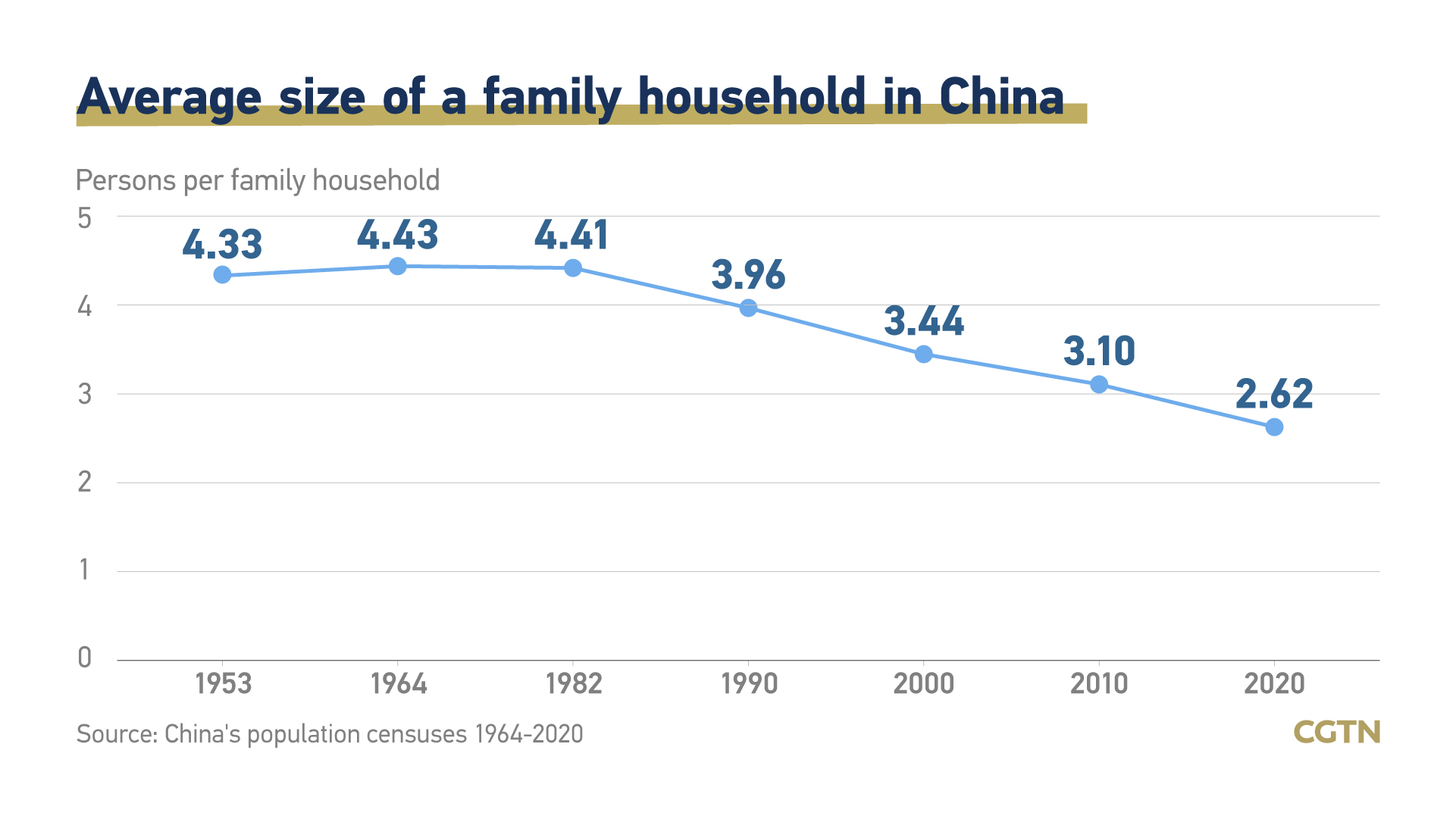
Family households continued to downsize over the past 10 years, a trend resulting from factors including increased population mobility and the fact that young people after marriage are now more likely to live separately from their parents in improved housing conditions.
The average size of a family household for the first time fell below 3, reaching 2.62 persons in 2020, down from 3.10 in 2010.
4. Education levels rise
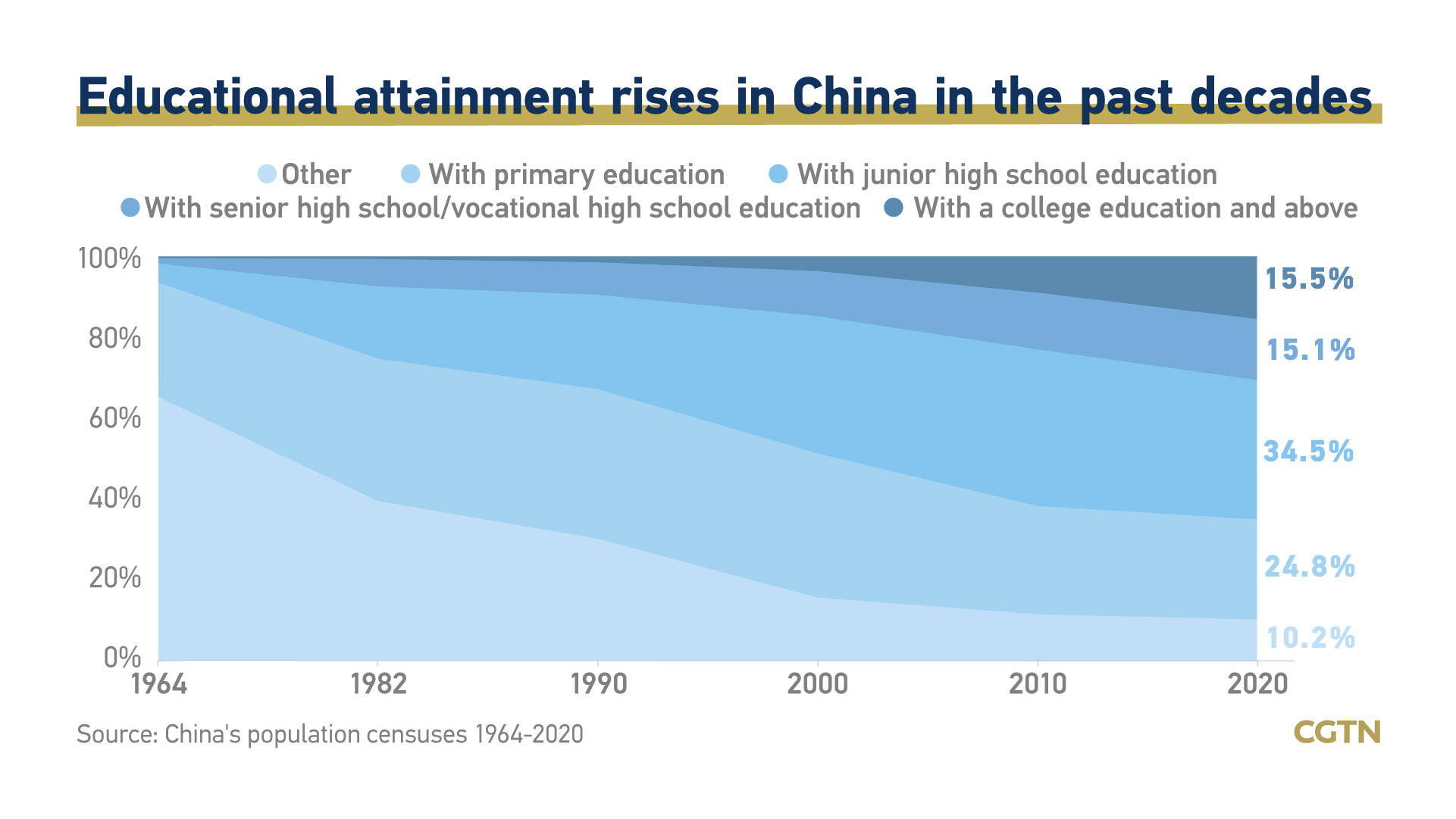
Educational attainment levels have risen markedly over the past 10 years, the census data suggests, with 154,670 people in every 1 million having a college education or above, up by 65,370 compared to a decade ago.
The average years of schooling for people aged 15 and above increased from 9.09 years to 9.91 years, while the illiteracy rate dropped from 4.08 percent to 2.67 percent. The continued improvement of educational attainment indicates that measures to promote higher education and eradicate illiteracy among young and middle-aged adults have had a positive impact.
Talent dividends brought by improved education levels have replaced demographic dividends. With a more educated population, China's vast workforce will continue to offer strong support for the country's high-quality development.
5. Urbanization rate surges
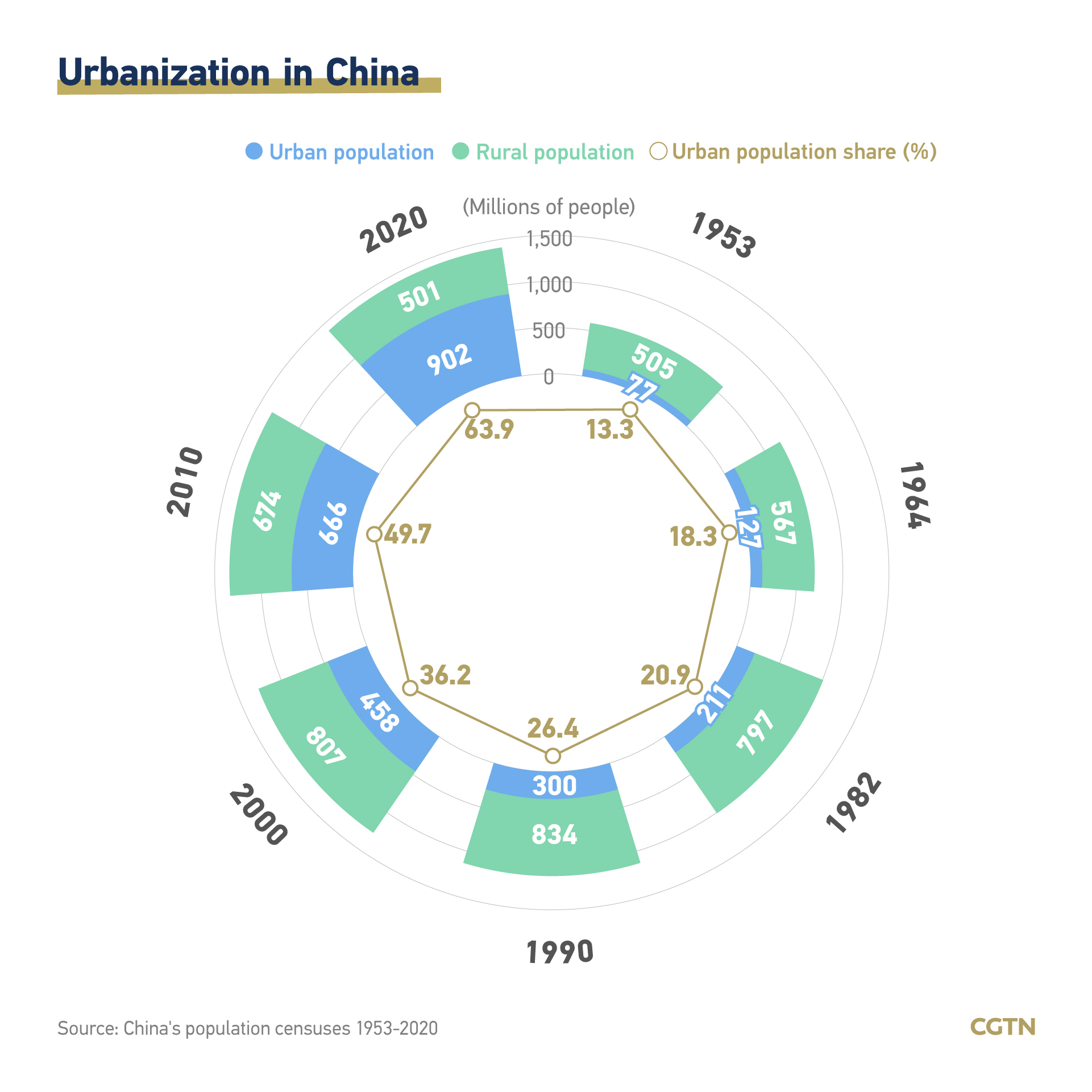
With the in-depth development of China's new industrialization, informatization and agricultural modernization, and the implementation of a policy to help people who have relocated from rural to urban areas to gain permanent urban residency, China's urbanization drive has advanced steadily over the past 10 years.
The share of the urban population grew by 14.2 percentage points, according to the census data, up from 49.7 percent to 63.9 percent.
6. Gender ratio stable
Of the national population, 51.2 percent were males and 48.8 percent were females in 2020. China's gender ratio remained steady from the last decade, basically the same level with a slight decline.
Yet, the gender ratio, male to female, at birth was 111.3, down by 6.8 compared to the last census.
Graphics: Chen Yuyang

